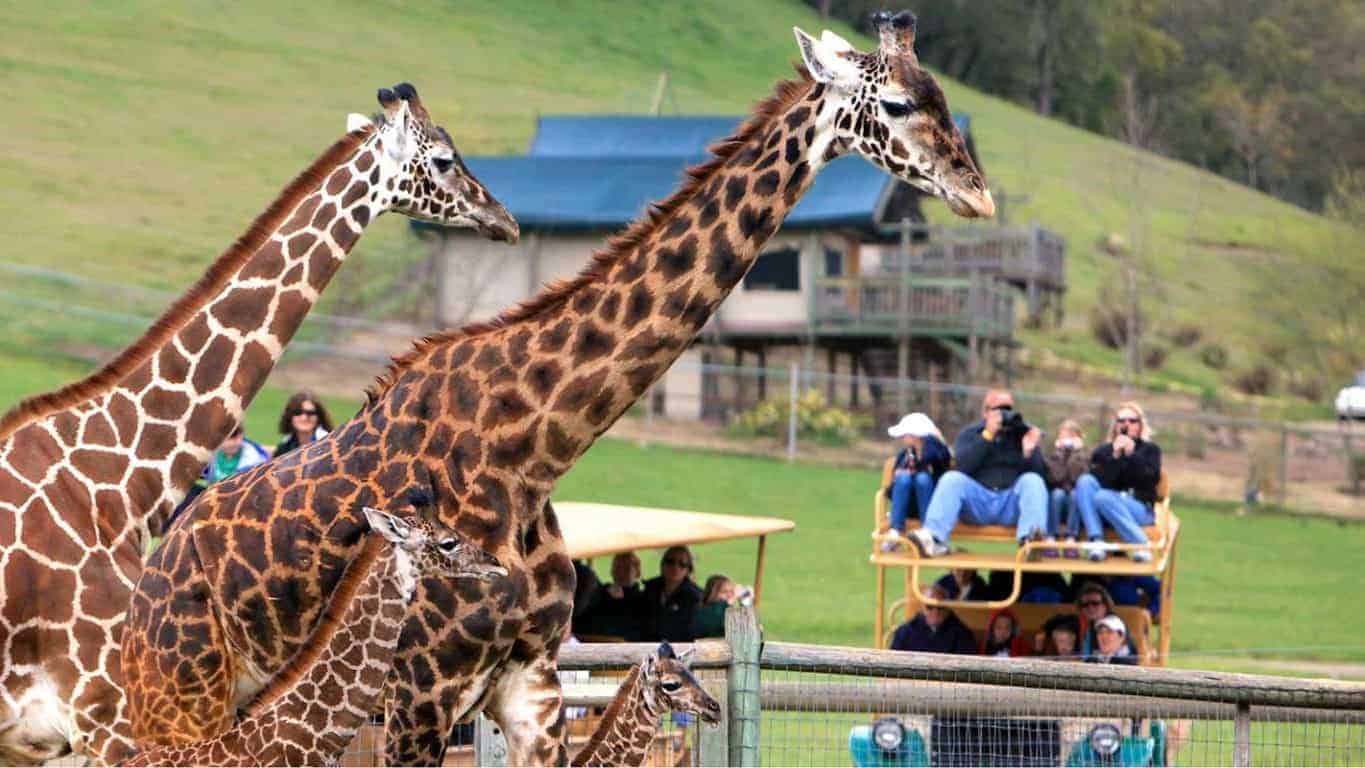Images of newborn giraffes and flamingos at Safari West are cute, but they pale in comparison to getting up close and personal. It’s a quick 15-minute drive from downtown Calistoga to this land of the lost, and I hadn’t known something so incredible could exist so close to a city, albeit a small one. Yet, here we were, ready for a safari, climbing into an open-air jeep made of metal bars, courtesy of the Korean War surplus vehicle acquired by owner Peter Lang.
Blame it on the ‘80s
Lang began working with animals at the impressionable age of 13, when a film company recruited him to raise lion cubs during summer vacation. His connection to the film industry came from his father, Otto Lang, who worked in television on shows that included the popular “Flipper.”
While others in Beverly Hills launched their acting careers, Lang turned to cattle ranching, not a common move in Beverly Hills, but a position that would eventually come in handy. But first things first.
In 1989, Lang migrated to Northern California, where he purchased 400 acres of land in Santa Rosa, very close to Calistoga, yet in Sonoma County in the foothills of the Mayacamas Mountains. The ranch and its surrounding land served a purpose that only someone with Lang’s background could realize. He began collecting exotic wildlife on his land, and by 1993, his lifelong experience working with animals led him to open Safari West to the public.
So many antelope!
It took three years since my own move to California to get to Safari West for a ride. We began on foot to tour through the area where exotic birds, cheetahs and primates were caged, at least for the most part. There was a fenced area we entered to enjoy a view of some interesting feathered friends, one a mascot of Safari West who followed our tour guide around like a puppy dog.
Vernon, our group’s tour guide, was seasoned and professional with a bit of humor mixed in. At times, I had to put my trust in him, especially when we rode to the site of grazing Cape buffalo, also known as Black Death and said to kill more big game hunters than any other animal. When Vernon stopped the vehicle so we could watch them slowly walk our way, I panicked a bit that the jeep’s engine might fail us and who knows what would transpire next. Alas, the motor started, and Vernon drove us ever so slowly away.
We drove along rolling hills to stop for a peek at the white rhinos and caught a glimpse of some wildebeest, zebra and so many antelope. His reason for introducing African eland, the largest of the African antelope, served a purpose, which, according to information found on the Safari West website, was “to eat away some of the higher shrubs so the grass would grow.”
The funniest stop was among a handful of giraffes. We were told that these tall necked creatures feed on acacia trees, have a four-chamber stomach like a cow, and that they chew their cuds and can make a fist out of their tongues. We were also informed that one or two might peek their head inside the jeep and possibly lick our heads. Thankfully, this didn’t happen, but it was at that moment I wished I’d taken the middle seat.
The one thing I didn’t experience was an overnight stay on property in a “glamping” tent. I’ve heard it’s an incredible experience to channel your inner Tarzan but be prepared: you will hear animal sounds before they quiet down for the evening, but it’s all part of the experience.

